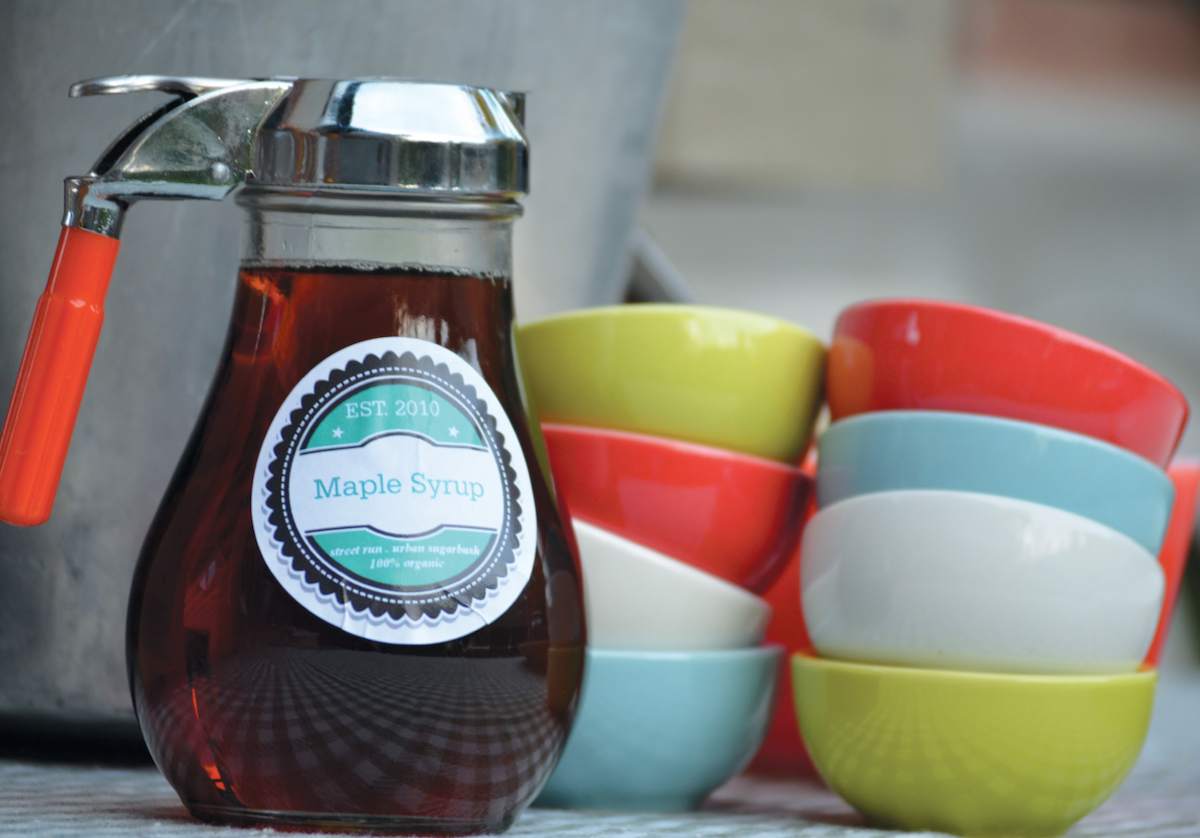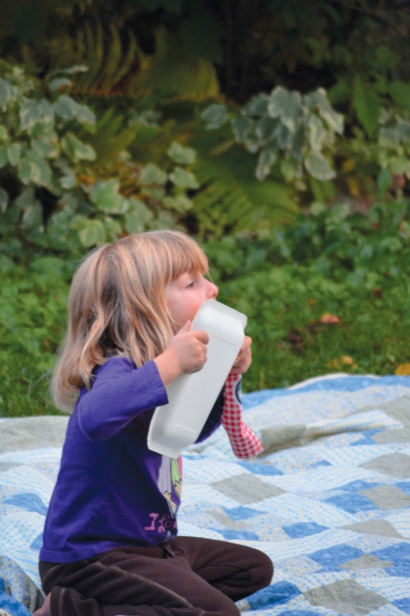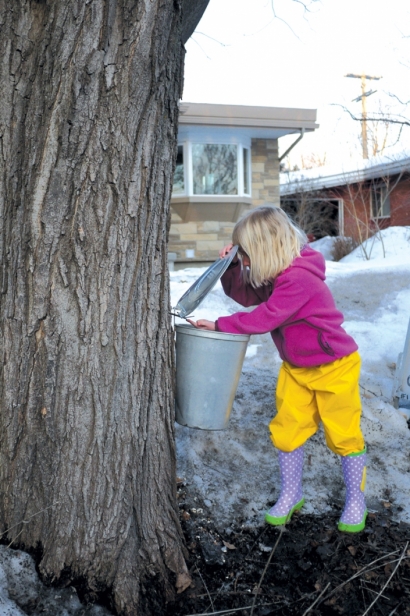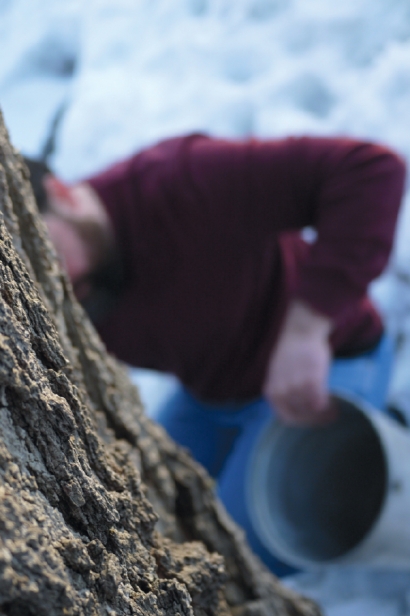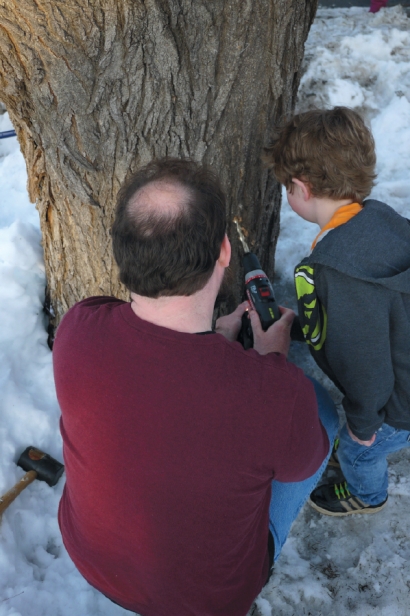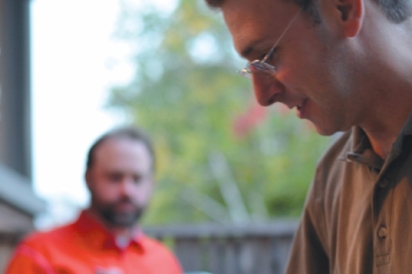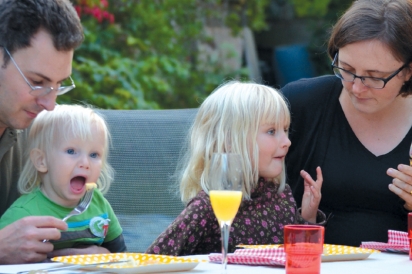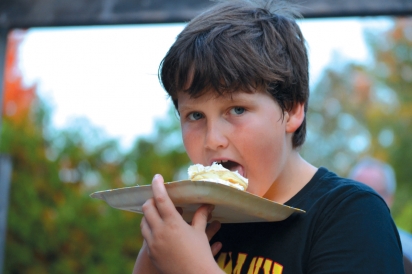Urban Tree Tapping
Maple syrup: a flavour Canadians are so familiar with, it likely courses through our bloodstream. It's rare to meet a Canadian who doesn’t appreciate that sweet, golden syrup we lavishly bathe our pancakes in — pretending the pool upon the plate was purely accidental. And don't deny it, even you have indulged in the irresistible desire to lick the plate clean.
Licking plates, sticky fingers and a child’s gaping mouth under the spigot of a freshly tapped maple tree are a familiar sight on the corner of Courtenay Avenue and Sherbourne Road, in Ottawa. In this little nook of the city, a few neighbourly families have taken up the practice of tapping the maple trees on their property and crafting a communal pot of maple syrup. Yes, one pot.
The tradition began by chance when, after a day of skiing in Pakenham, Sara Purdon, her partner Dell Drummond, and their two sons, Trent and Oliver, happened upon the tree-tapping supplies sold at a feed and seed store. Excited about the idea of producing their own syrup, they spent approximately $10 and went home with a tin sap bucket brimming with sweet ambitions.
“We started by tapping our own tree in the front yard,” Purdon says, “and soon the neighbours were asking 'Are you actually making maple syrup?'" With only the one tap on a tree that is largely in the shade, the yields were rather slim that year but the excitement was flowing. The following year, two other families on the street joined in and tapped their trees as well. Now, it is an annual practice for the three young families.
The process of tapping a tree is actually not that difficult. Providing the tree is at least 25 centimetres in diameter and more than 40 years old, one need not be wary of harming it. Larger trees can even be fitted with as many as three taps at the same time. As the name suggests, sugar maples are the ideal tree to tap, yielding the most sap. The residents of Courtenay Avenue were not lucky enough to have sugar maples on their properties, but they have managed to successfully make anywhere from one to five cups of maple syrup, depending on the year. That doesn’t seem like a lot but for these families, it’s all about the experience.
The children are intricately involved in the entire process. Nearing the end of February, when temperatures range from -5C to +5C, Drummond helps them to drill a one-centimetre-wide hole into the trunk of the tree, about 5 centimetres deep, to properly fit the tap. Purdon maintains that the most yields occur when the tap itself is in the sunlight; however, because new holes must be drilled more than 10 centimetres away from the previous year’s, this is not always possible. After the tap is in the tree, Purdon says, “Just watch as the kids drink it straight from the spout!” Lastly, they affix a bucket to the trunk to collect the sap and store it in the fridge or freezer until they are ready for the next step.
During this season of collecting the tree’s bounty, Purdon’s house becomes the central hub of sap. Children race home from school and excitedly check, taste and empty their sap buckets, wheeling them in on skateboards to fill Purdon’s kitchen. The neighbours, especially the elderly couple who live across the street, enjoy watching this flurry of activity from their windows.
Drummond and Purdon take turns boiling the sap in batches throughout the month of March. It takes about 30-40 litres of maple sap to make just one litre of syrup, which should be boiled as soon as possible to avoid fermentation. Laughing, Purdon recalls the first year they boiled the sap in their kitchen and how it wasn’t long before the entire room, “cupboards, walls, everything was absolutely covered in a sticky film.” After that, they purchased what they consider to be the second-mostimportant piece of equipment for the process: a tank of propane for an outdoor burner.
Of all the steps in the maple syrup process, boiling the sap is the trickiest part. Purdon and Drummond have relied on the assistance of the Internet and trial and error to perfect their syrupmaking process. They warn that while it takes a bit of time and patience to reach the syrupy consistency we all know and love, over-boiling the sap can happen suddenly and you are left with a thick taffy — the stuff served on popsicle sticks at the sugar bush.
To celebrate their syrup success, each summer about 20 of the neighbours gather at the Purdon’s house for a pancake party. They make a few batches of corn cakes — an old Purdon family recipe and, of course, douse them in their very own maple syrup. The children bring their tents and sleeping bags, prepared to camp out in the yard for the night following a long bonfire. “Young and old, people participate in their own way,” says Purdon, “and that’s the most important part about all this syrup.”
Jacqueline Lawlor heartily endorses plate licking… and dishwashers.


